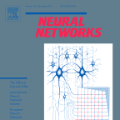Graph Neural Networks (GNNs) are a highly effective neural network architecture for processing graph-structured data. Unlike traditional neural networks that rely solely on the features of the data as input, GNNs leverage both the graph structure, which represents the relationships between data points, and the feature matrix of the data to optimize their feature representation. This unique capability enables GNNs to achieve superior performance across various tasks. However, it also makes GNNs more susceptible to noise from both the graph structure and data features, which can significantly increase the training difficulty and degrade their performance. To address this issue, this paper proposes a novel method for selecting noise-sensitive training samples from the original training set to construct a smaller yet more effective training set for model training. These samples are then used to enhance the model's ability to handle noise-prone instances effectively. We have evaluated our approach on three of the most classical GNN models -- GCN, GAT, and GraphSAGE -- as well as three widely used benchmark datasets: Cora, Citeseer, and PubMed. Our experiments demonstrate that the proposed method can substantially boost the overall training of Graph Neural Networks compared to using randomly constructed training sets.
翻译:暂无翻译




